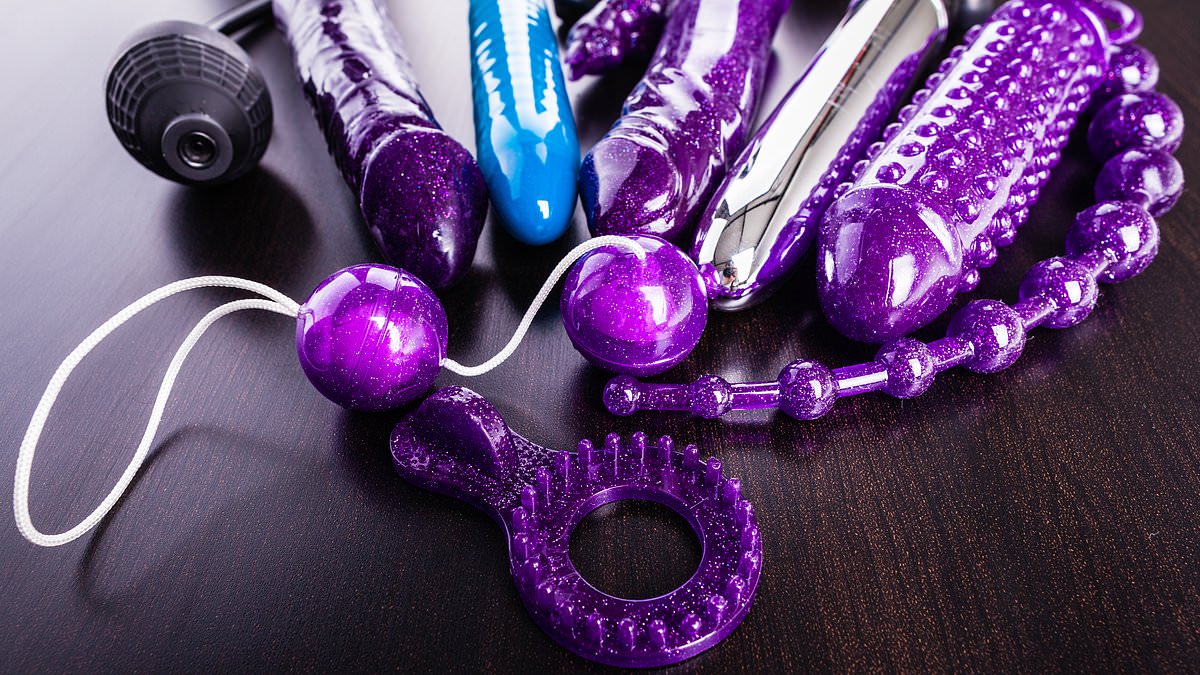Sex toy tester Deon Black was about to try a new toy with his girlfriend when the device suddenly became very hot and burned him.
He escaped with only a few scalded fingers but, after years of testing sex toys for work, the incident led him to start questioning the safety of the devices.
Mr Black was shocked at the research on the topic he discovered, which suggests sex toys release microplastic and nanoplastics into your genitals. They may also be absorbed through the skin and enter the bloodstream, and have been linked to cancer, infertility, and birth defects.
Microplastics are tiny plastic particles less than five millimeters long which break away from larger plastic items. Nanoplastics are even smaller, at just 100 nanometers across or less.
A March 2023 study tested four different sex toys and found phthalates were present in allof them
Sex toy microplastic under the microscope. A – anal toy, B – beads, C – external vibrator, D – dual vibrator
The abrasion rate is the amount of plastic that fragmented off the toys. The anal toy displayed the highest abrasion rate followed by the beads, then the dual vibrator, and lastly the external vibrator
From your genitals, they may infiltrate your bloodstream through the skin barrier, carrying phthalates, a group of chemicals used to make plastics more durable and flexible and last longer, into the brain, lungs, and placenta. Phthalates are linked to cancer, infertility, and birth defects.
Mr Black claimed consumers are ‘completely in the dark’ about the risks of using sex toys and has started a petition asking FDA Commissioner Dr Robert Califf to classify sex toys as Class II devices, which would make them subject to special health controls such as clinical tests and more stringent safety regulations.
Class II devices are medical devices that have a moderate to high risk to the user, such as powered wheelchairs and some pregnancy test kits.
The petition currently has 2,274 signatures of its goal of 10,000.
Research on plastics exposure via sex toys is limited, but one study from March 2023 found all the sex toys tested released microplastic and nanoplastic from abrasion, when small fragments of the toy come off due to friction during use.
The researchers, from the Appalachian State University in Boone, North Carolina, tested four types of currently available sex toys: anal toy, beads, dual vibrator, and external vibrator.
Nanoplastics carry phthalates — a group of chemicals used to make plastics more durable and flexible and last longer.
Phthalate exposure is attributed to 100,000 premature deaths in the US each year.
The chemicals are known to interfere with hormone production in the body and are ‘linked with developmental, reproductive, brain, immune, and other problems’, according to the National Institute of Environmental Health Sciences.
In the 2023 study, phthalates were present in all tested sex toys at levels exceeding hazard warnings – even in those labeled as ‘phthalate-free.’
One sex toy looked at in the researchers’ preliminary testing was overtly advertised as being ‘phthalate-free’, but their chemical analyses revealed this was not the case.
They found that all four sex toys tested in the main part of the study contained phthalates that are either over the 0.1 weight percent limit for one particular phthalate called Di-n-octyl phthalate, or phthalates that are banned by the European Chemicals Agency in the EU.
This limit applies to children’s toys and is not illegal to sell currently as sexual wellness products.
However, the study only tested four toys, and the researchers wrote: ‘This data set is not intended to be representative of sex toys as an entire class of products, nor are the abrasion experiments claiming to simulate exact use conditions.’
Mr Black believes the stigma around sex toys is holding back research.
